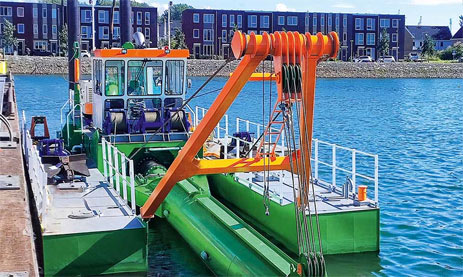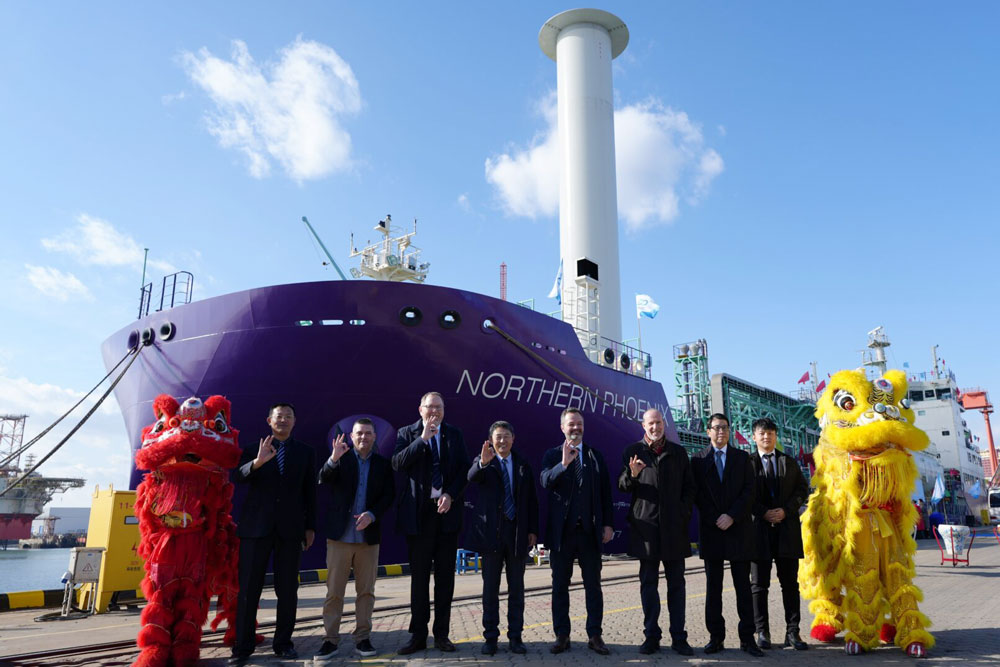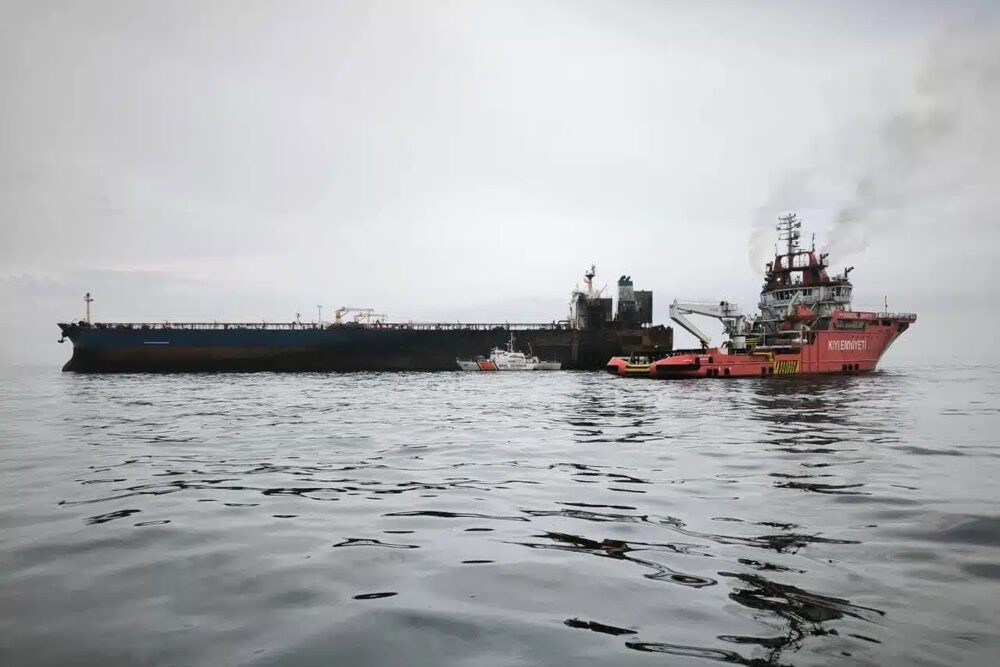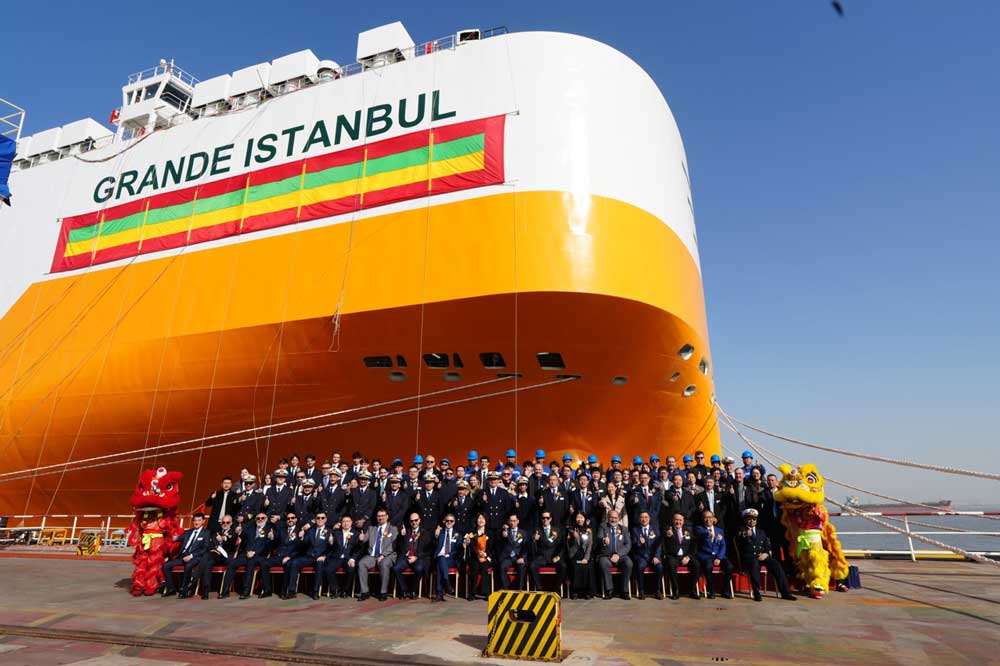The maritime economy continues to be one of the largest industries in the world. As data from the OECD organization shows, it accounts for 100 million jobs.
Tourism and the Asia-Pacific region account for the largest share. However, according to the OECD, the future of the industry depends on preparing for automation and the skills shift.
From fishing and tourism to offshore energy and maritime transportation, the maritime economy provides millions of jobs across different industries and regions. Until recently, however, there was no consistent global picture of how many people are actually employed in the industry. The new international estimates of the OECD Ocean Economy Monitor, presented in the report “The Ocean Economy to 2050“, help to close the existing gap. For the first time, they provide coherent statistics on employment in the maritime economy across different time periods, sectors and countries.
100 million full-time jobs
Between 1995 and 2020, the maritime industry consistently created more than 100 million full-time equivalent (FTE) jobs worldwide. Employment peaked at 151 million in 2006 and averaged 138 million throughout the period. In 2020, global employment in the ocean economy fell to a low of 101 million due to the COVID-19 pandemic. Preliminary estimates indicate that a recovery to a similar level as before 2019 has started since then. The earliest estimate from 1995 was 122 million FTE, which is relatively low compared to the 21st century average, which has always remained above 134 million.
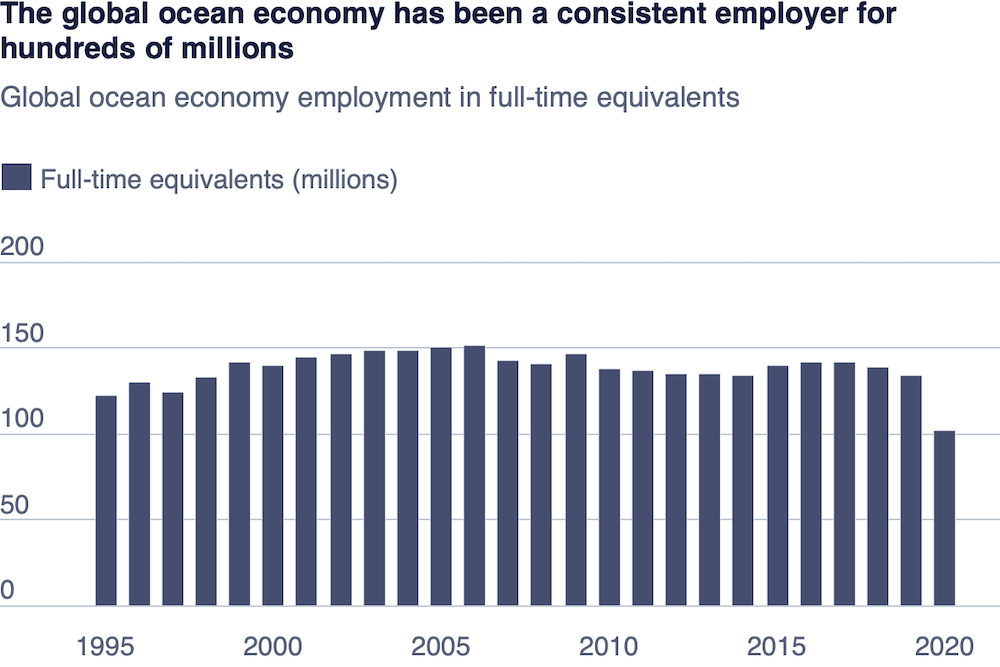
Marine and coastal tourism accounts for 60%
The largest source of employment in the marine economy is marine and coastal tourism. This sector includes everything from beach resorts to cruise companies and cultural activities. These industries tend to be labor-intensive and less suited to automation, making them global job creators. On average, marine and coastal tourism accounted for around 60% of full-time jobs in the marine economy between 1995 and 2020.
The second largest employer – marine fishing, marine aquaculture and marine fish processing – accounts for around 22% of total full-time equivalent marine jobs, just over a third of the tourism share. Interestingly, marine and coastal tourism is also the largest group of maritime industries in terms of its contribution to gross domestic product (GDP) in most years between 1995 and 2020.
The third largest employer is maritime transportation and ports. However, other relevant industry groups that make a large contribution to GDP are not automatically large employers. Offshore oil and gas extraction and the offshore industry that works for it, for example, represent the second largest part of the maritime economy in terms of GDP, but create relatively few full-time equivalent jobs.
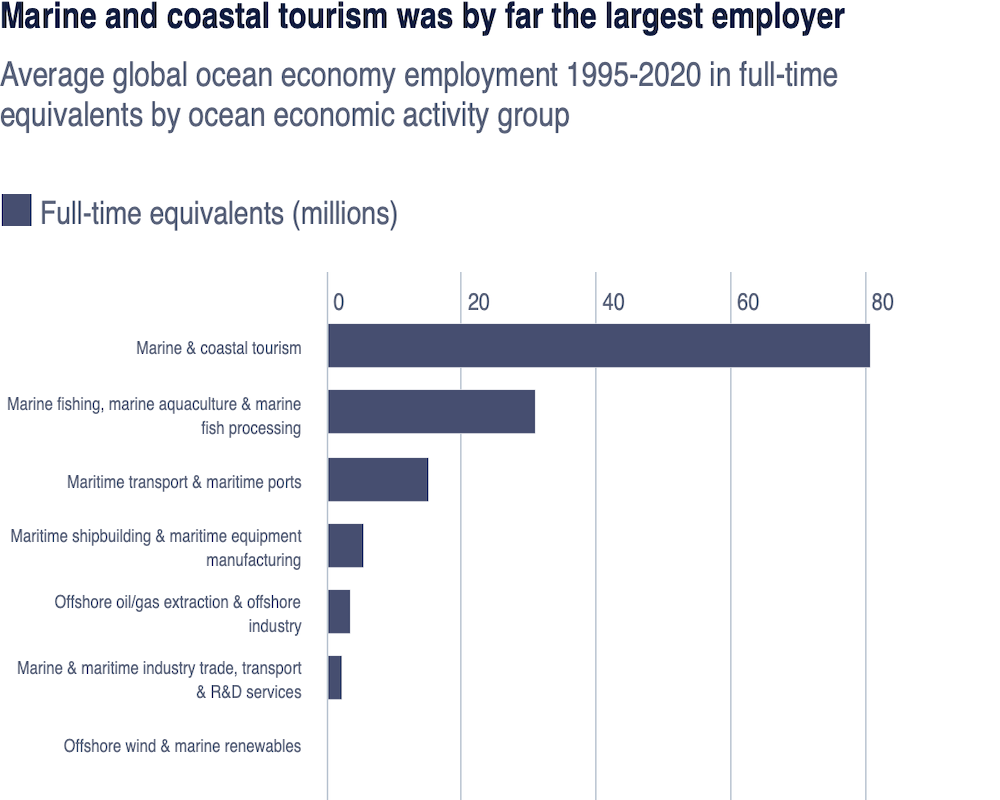
OECD: Renewable energies are growing rapidly
One of the newest and fastest growing sectors of the maritime economy is offshore wind power and marine renewables. Before the year 2000, this sector was practically non-existent on an industrial scale. Since then, offshore wind power has played an increasingly important role in some countries’ energy mix thanks to sometimes exponential growth in production. However, despite the rapid growth in production, global employment levels remain low compared to other marine industries, reflecting the infancy of the industry in many regions. As the industry develops and more countries expand their offshore wind capacity, the number of full-time employees is likely to increase.
Asia-Pacific dominates maritime economy
Employment in the global maritime economy is heavily skewed towards the major population centers in Asia. Asia and the Pacific account for more than two-thirds of global maritime employment. China and India alone account for almost 56 million FTEs, or around 40% of total global employment.
While the Asia-Pacific region dominates in absolute terms, the growth of FTEs in the Asia-Pacific region remained roughly the same, with an average annual growth rate estimated at minus 0.9%. In fact, Africa recorded the fastest average annual FTE growth rate between 1995 and 2020, with 3.4% for Sub-Saharan Africa and 1.8% for North Africa and West Asia, which includes countries in the Middle East. In contrast, employment in the marine industry declined in Europe and North America, with negative average annual FTE growth rates of 2.2% and 2.5% respectively.
Automation, skills and resilience
Employers and employees are likely to face significant opportunities and challenges in the coming decades as the maritime economy undergoes rapid technological change, according to the OECD. Advances such as autonomous vehicles and AI-powered port logistics are driving productivity in the industry by displacing traditional jobs such as dock workers and crew members. At the same time, emerging industries such as offshore wind and marine biotechnology are creating new demand for specialized skills that may exceed the capacity of existing training programs and leave critical skills gaps.
Particularly in coastal communities, local jobs that depend on marine and maritime services may also be at risk from domestic and international outsourcing. These growing pressures highlight the need for governments and businesses to invest in proactive planning, inclusive upskilling strategies and support for vulnerable workers during transition to build a resilient and sustainable marine workforce.







